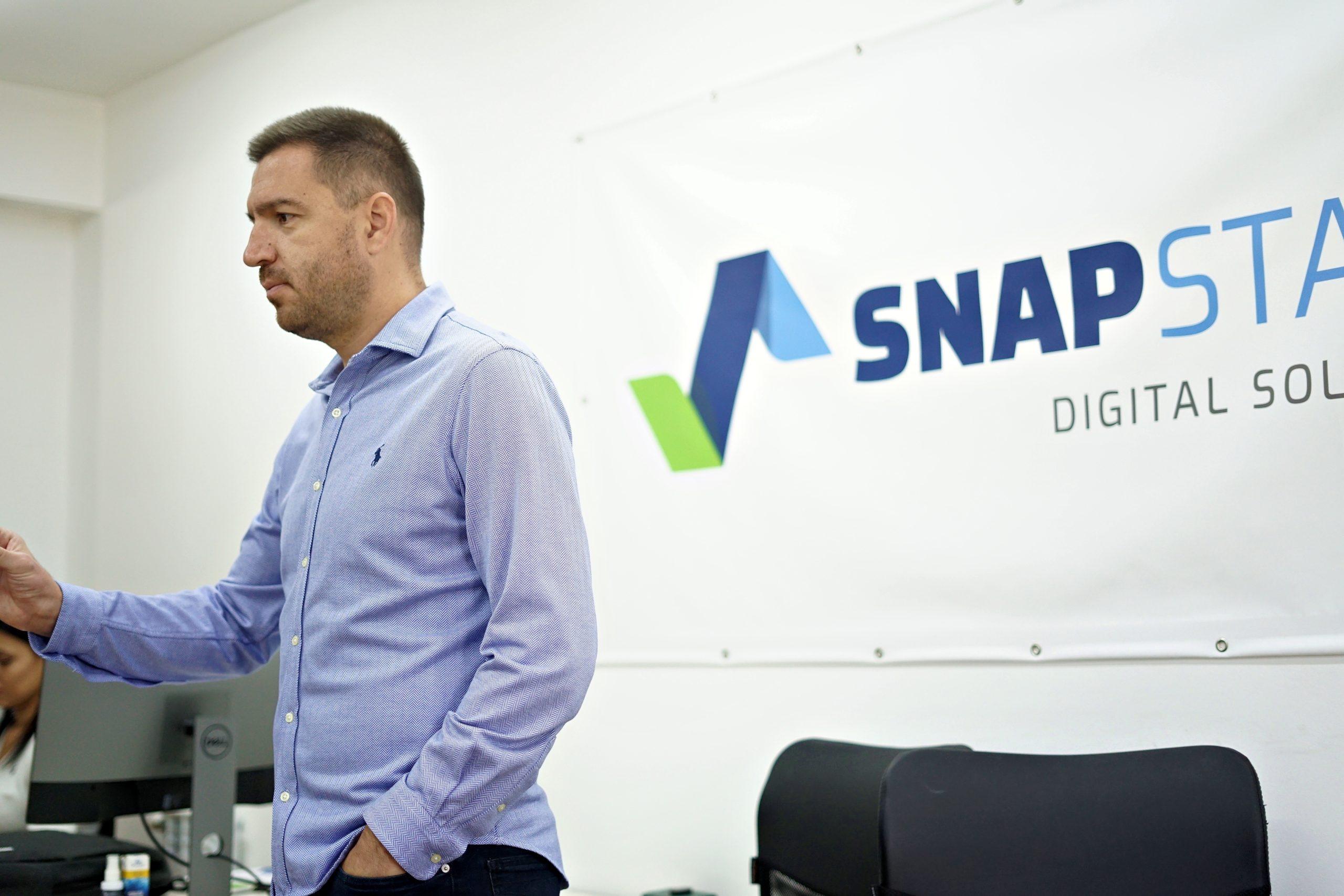The world of finance, for ages, has been a centralized system where control and authority remain within a specific body or organization. Fraud, misappropriation of assets, and manipulation are threats that loom large over such a system. A solution to this has been found, as ever, nestled in the arms of technology - blockchain.
But what is blockchain in finance and is it truly changing the way finances are handled? We know the answers, but you be the judge of its power.
What Is Blockchain in Finance?
Blockchain in finance refers to the use of blockchain technology to drive and improve financial transactions and services. Think of it as a distributed ledger since the recorded information is stored across multiple sites or participants.
Its decentralized and secure nature allows for increased transparency, efficiency, accuracy, and security in financial transactions. It's being used in banking, remittances, securities trading, settlements, and insurance among others.
Blockchain is behind the rise of cryptocurrencies like Bitcoin, but its applications extend far beyond digital currencies. Large financial institutions are exploring its implementations to transform traditional banking processes, reduce fraud, and promote financial inclusion.
[ecta id='16']
Blockchain Use Cases in the Financial Services Industry
Blockchain's unchangeable ledger and decentralized nature offer a paradigm shift in how businesses handle financial transactions.
Remittances and Cross-Border Payments
You can find the roots of blockchain technology usage in the financial industry in Bitcoin, aiming to transfer assets from one point to another, autonomously, free from central oversight. Fast forward to today, blockchain's robust capabilities allow financial institutions to offer quick and effortless money transfers.
For instance, blockchain holds the potential to revolutionize remittances and cross-border payments, traditionally associated with high costs and long waiting times. According to Statista, in 2022, global remittances reached an estimated $830 billion and are projected to amount to $858 billion by 2024, but face barriers of high transaction fees that can exceed 10%. Blockchain can slash these fees to 2-3%.
Securities Trading and Settlements
Delays associated with traditional settlement procedures can lead to significant risks and inefficiencies. Implementing blockchain technology can reduce the settlement time from a few days to almost instantaneous, notable in the era of increasing high-frequency trading.
Smart Contracts and Decentralized Finance (DeFi)
With blockchain, financial institutions can create smart contracts — self-executing contracts with the terms directly written into code. Smart contracts drive another blossoming field, decentralized finance (DeFi).
DeFi seeks to replace traditional financial intermediaries (think banks) with blockchain-based protocols. DeFi’s total value locked (TVL) has exceeded the $80 million mark, indicating the technology’s increasing acceptance.
Identity Verification and Fraud Prevention
The financial industry is a regular victim of fraud, resulting in substantial losses and weakened trust — the cost of fraud is highest among US banks, with every $1 of fraud loss costing $4.36.
Blockchain can overhaul identity verification procedures with its immutable record, significantly securing processes against fraud. Applying blockchain for identity verification can diminish KYC (Know Your Customer) costs, also improving the effectiveness of anti-money laundering (AML) protocols.
Tokenization of Assets
Although this technology is still in its infancy, the future holds immense possibilities for the tokenization of assets. Tokenization of assets basically refers to the representation of real-world assets in digital form, on the blockchain. Fundamentally, it transforms the approach to asset management and ownership, promoting liquidity and accessibility.
What’s more, asset tokenization is set to redefine proprietary boundaries, driving inclusivity and democratization within the financial domain. Physical assets such as real estate, priceless art, or even rare collectibles can now have digital counterparts. This transformation digitizes ownership and allows for fractional ownership, where an asset can be owned by multiple entities in varying proportions.
Thanks to blockchain's inherently secure and decentralized nature, the risks associated with asset tokenization can reduce drastically, fostering greater confidence among investors and traders. Its transparency fortifies the anti-fraud endeavor, as every transaction and transfer of ownership is recorded and auditable.
Financial Companies Championing Blockchain Adoption
Of course, the theoretical potential of blockchain technology in finance is only made relevant by the practical agents that promote its use, inclusion, and integration into financial systems. Let’s look at the progressive financial companies that are leading the charge in blockchain adoption:
J.P. Morgan
The multinational investment bank and financial services giant, J.P. Morgan, is one of the early adopters of blockchain technology. They have developed a proprietary blockchain, Quorum, to enable instantaneous payment transfers and to track financial information in real time.
However, Quorum has since been acquired by Consensys, which didn’t stop J.P. Morgan from exploring the possibilities of blockchain even further. Nowadays, they are relying on blockchain technology to revamp the fund transfer process between banks across the world through their innovative solution Confirm.
“Confirm is expected to help reduce the number of rejected or returned transactions caused by mismatched payment details, lowering costs for both the sending and receiving banks.” - as per J.P Morgan.
This will, in turn, lessen rejected transactions and reduce expenses for both sending and receiving banks. Existing on J.P. Morgan’s own Liink platform, Confirm operates as an international account validation tool. It empowers partner banks to fast-track account detail verification for beneficiary banks and ensure efficient payment routing using 'PayDirect', J.P. Morgan's global clearing solution.
Bank of America (BofA)
The second largest banking institution in the US, Bank of America, has also invested in blockchain technology. Relying on a blockchain-based platform offered by Paxos Trust Company known as the Paxos Settlement Service, they are automating the processes in their operations, significantly reducing the time necessary to settle a trade.
The bank's CEO, Brian Moynihan, disclosed that they hold numerous blockchain patents as a means of addressing the needs of the 60% of their clients who move money digitally.
Goldman Sachs
Goldman Sachs has been actively exploring the capabilities of blockchain technology for several years now. In 2015, the company joined other institutions in investing more than $50 million in Bitcoin payment gateway company, Circle. This move symbolized Goldman Sachs' early interest in blockchain's potential.
However, it didn't stop there. In 2018, it launched its Bitcoin Trading Desk, becoming the first major Wall Street bank to make a move of this nature. This further solidified its stance on not just participating but leading in the blockchain revolution. To cap it off, they led a $25 million funding round for blockchain payments startup Veem.
Challenges of Implementing Blockchain for Financial Companies
Blockchain is a relatively new technology and as such, there are many challenges associated with its implementation:
Financial Regulation and Compliance
Being a disruptive technology, blockchain often poses a conflict with existing financial regulations. Transitioning into a blockchain-based system would require financial institutions to adapt their often rigid procedures in compliance with frequently changing, and sometimes ambiguous, legal and regulatory expectations. It's an enormous challenge to remodel laws and regulations based on traditional financial models to fit the innovative structure of blockchain.
Interoperability and Standardization
Interoperability issues arise when it comes to integrating the blockchain with existing systems or among different blockchain platforms. The lack of standards and common protocols can impede consistent data exchange and hinder seamless interlinks among these platforms, posing a significant barrier to widespread blockchain adoption.
Scalability and Performance
There could potentially be speed and scalability issues as the size of the blockchain increases. As transaction volume grows, the computational power required to process and validate these transactions significantly escalates. This can lead to increased transaction times and costs, which hampers the performance efficiency of the blockchain, a factor vital for robust financial applications.
Blockchain in Finance: Key Takeaways
The application and impact of blockchain in finance and other industries are substantial and still evolving rapidly. From expediting secure and seamless transactions to revolutionizing traditional banking roles, blockchain has triggered a shift that's redefining the financial realm. Forward-thinking financial institutions are already championing its adoption, illustrating a tangible future where blockchain is deeply embedded in financial operations. And that’s a future you want to be a part of!




